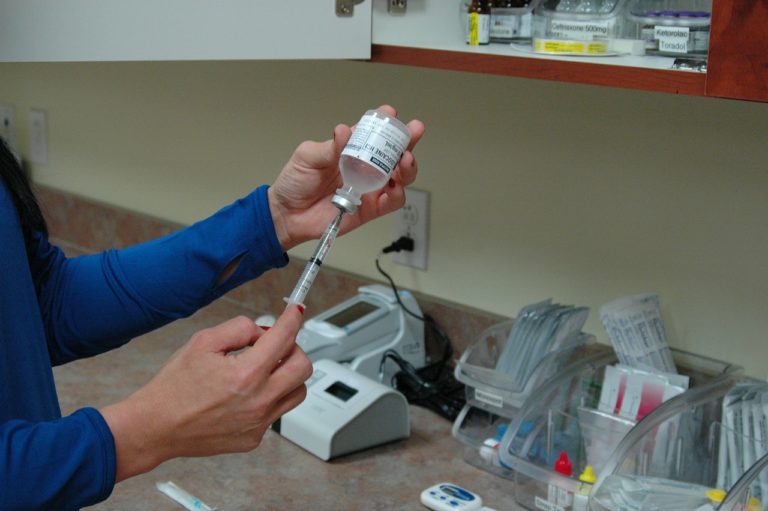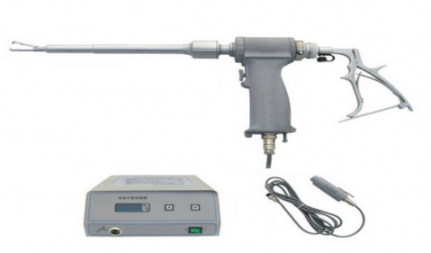Medical malpractice is a preventable adverse effect of medical care, whether or not it causes harm to the patient. Intensive care units, operating rooms, and emergency departments tend to have the highest medical error rates. The National Institutes of Health says that medical errors tend to be associated with extremes of age, new procedures, urgency, and the severity of the medical condition being treated. According to the World Health Organization, the risk of patient death occurring due to preventable medical malpractice while receiving health care is about one in 300. Nearly half of the errors in healthcare are considered preventable.
According to a recent study by Johns Hopkins, more than 250,000 people in the United States die every year because of medical errors or medical malpractice, making it the third leading cause of death, after heart disease and cancer. The most common medical malpractice in the United States, according to the National Institutes of Health, are: adverse drug events, catheter-associated urinary tract infection, central line-associated bloodstream infection, injury from falls and immobility, adverse obstetrical events, pressure ulcers, surgical site infections, venous thrombosis (blood clots), and ventilator-associated pneumonia. However, medical malpractice also includes transfusion errors, adverse drug events, wrong-site surgeries, surgical injuries, restraint-related injuries, hospital-acquired infections, treatment-related infections, and falls, burns, and pressure ulcers.
Learn More From a Medical Malpractice Lawyer
Most Common Medical Errors in the U.S.
Medical errors happen at astounding rates in the U.S. (nearly 100,000 deaths every year) and the best way to help prevent one from happening to you is to know what to look for.
The most common medical malpractice claims in healthcare include:
- Medication errors – Though it’s the most common type of medical error, medication mistakes are also the most preventable. This includes the misinterpretation of prescription abbreviations and instructions, sometimes due to poor handwriting.
- Infection – While hospitals are expected to be clean and sanitized, hospital-acquired infections such as catheter-associated urinary tract infections, surgical site infections, bloodstream infections, pneumonia, and clostridium difficile, are a big risk to patients receiving medical treatments or surgery in the hospital.
- Poor communication – Miscommunications between healthcare facilities and providers, and between patients and providers often leads to errors in healthcare.
Other medical malpractice claims include:
- Prescription Abbreviation Errors: Sometimes medication information and accompanying instructions are written quickly, and as a consequence, incorrectly. (Not to mention doctors don’t always have the best handwriting) This means pharmacists and caregivers may be providing you with the treatment regimen. Sometimes a D looks like a P. And sometimes “QHS” is read as “QHR,” which will have you taking your meds far too often. For a look at similar errors, have a look at this Institute for Safe Medication Practices (ISMP) PDF.
- Drug Interactions: There are a number of interactions which can make your prescribed drug dangerous to your health. Your doctor should know these interactions and should make sure you are notified of them. Failing to do so will put at risk for great harm. This includes drug-to-drug interactions and drug-to-diet interactions.
- IV Mistakes: One of the most common mistakes occurring in hospitals are those involving intravenous meds. The errors include problems with the line, as well as giving patients incorrect dosages.
- Equipment Errors: Sometimes the biggest problems occur for the simplest reasons. Anesthetic machines, x-ray machines, defibrillators, etc., have been known to malfunction for simply not having good batteries. Hospital staff are sometimes so concerned with the “big” issues that they overlook everyday problems, like dead batteries.
- Billing Mistakes: While not malpractice, on occasion a hospital commits a mistake in billing. It may not be intentional, but it can still cost you money. A medical bill could have some complicated charges that actually don’t have any relation to your care. Remember, when in doubt, scrutinize your bill and call the billing office.
Get a Consultation for your Medical Malpractice Case
What Is The Most Common Cause Of Medical Errors?
Miscommunications are the most common causes of medical errors in healthcare. Whether verbal or written, miscommunication can occur between physicians, nurses, patients, or other health care providers.
Addition Causes of Medical Errors include:
- Inadequate Information Flow. When necessary information does not follow a patient who is transferred to a new facility.
- Human Problems. Medical errors, like poor documentation and labeling of specimens, are made by human beings. When standards of care, policies, processes, or procedures are not followed properly by staff, it can lead to medical errors.
- Patient-Related Issues. Issues like inappropriate patient identification, inadequate patient assessment, failure to obtain consent, and insufficient patient education fall under this category.
- Organizational Knowledge. Put simply, these issues can include insufficient training and education for health care providers.
- Staffing Patterns and Workflow. Understaffing can put healthcare workers in a position where they are more likely to make mistakes.
- Technical Failures. The failure of medical devices, such as implants, grafts, or other medical equipment can lead to undesirable outcomes.
Distracted Doctoring
These days, doctors have a lot of information at their disposal — in fact, many doctors have medical information right in the palm of their hands. Use of Smartphones, tablets, and other gadgets makes it possible for doctors to get more done in a short amount of time.
- Patient data? Check.
- .Medical history? Check.
- Case studies? Check.
- Drug information? Check.
But in a time when the Institute of Medicine reports an average of 100,000 medical error fatalities every year, is it a good thing that doctors are spending more time with their eyes — and minds — on their electronic devices?
Distracted Doctoring is Becoming a Real a Concern
One of the main problems with Smartphone use on-the-job is that electronic devices have tons of features — most of which don’t help doctors do their jobs better. Access to email and social networks is just a click away, and the temptation is often too much to resist.
A 2010 peer-reviewed survey which polled 439 medical professionals who perform cardiopulmonary bypasses revealed that roughly half of those polled confessed to having used their cellular phones during a procedure.
The issue, it seems, is mostly with younger doctors. These physicians are members of a generation so used to using cell phones and computers that not-using them is almost unheard of. In fact, the problem is sparking conversation in med schools, with professors reminding students that the patient is the priority, not their cell phones.
In an attempt to combat distracted doctoring, some hospitals are mandating that operation rooms be deemed “quiet zones,” meaning there is to be no interaction with cell phones or computers. And while this is a step in the right direction, the rule is not easy to enforce.
Distracted doctoring is an unfortunate consequence of doctors having the ability to access useful patient information right when they need it. Abuse of cell phones, however, could very well lead to even more medical errors in hospitals. And there’s already way too many of those.
Learn More About Distracted Doctoring Cases
FBI Investigates Medical Devices Linked to Spreading Uterine Cancer
The Food and Drug Administration (FDA) does not regulate medical devices as stringently as prescription drugs. With a good amount of unregulated devices in the medical field, the risk of complications from the use of medical devices can therefore be high. Recently, the FBI began an investigation into a particular surgical device, the Morcellator. Invented by Johnson & Johnson, this laparoscopic power device has caused greater issues and further medical problems for patients than the company’s claims to have been aware of. In fact, the FBI is looking into the idea that Johnson & Johnson knew about the tool’s hazards before they pulled it off the market last year.
A morcellator is a surgical device used during procedures that treat uterine fibroids, such as hysterectomies or myomectomies. This laparoscopic device creates tiny, minimally invasive incisions, which allows the device’s rotating blades to enter the patient’s body and break down large tissue masses or tumors into smaller fragments. The broken-down tissue fragments are then vacuumed out the body. However, the FDA says the morcellator may be responsible for seeding cancer into the patient. During the process of removing the small fragments of tissue mass, if any of the tissue containing cancer cells get left behind, they have the ability to spread to other part of the body, in turn leading to the development of tumors.
Prior to Johnson & Johnson removing their device from the market, surgeons had been using this device for procedures to treat uterine fibroids. The dangers of using the Morcellator were brought to light by Dr. Amy Reed, an anesthesiologist, and Sarah Robinson, a physician assistant. Both had this procedure performed, which resulted in worsening of their conditions. After Ms. Robinson’s cancer worsened from the use of the morcellator, she collected a list of women and families of women whose cancer worsened as a result of the device, which was sent to the FBI. Dr. Reed, along with her husband who is also a physician, have been vocal in a campaign to the FDA and FBI against the use of the morcellator. The FDA soon after recommended that laparoscopic morcellators no longer be used. Meanwhile, the FBI had started an investigation into whether Johnson & Johnson were previously aware of the devices link to the spread of uterine cancer in patients.
Ways To Prevent Medical Malpractice
To protect yourself from medical malpractice:
- Become an active member of your healthcare team. The most important thing you can do to prevent medical errors is to get involved in your care. Don’t assume everyone on your medical team has all of your information!
- Tell your medical team about your medication history, including your current medications and dosages (including over-the-counter medications, vitamins and herbal supplements), and drug allergies.
- To avoid infection, keep an eye on everyone caring for you and make sure that they wash their hands and wear clean gloves.
- Before a medication is administered, confirm that it is the correct medication and dosage.
- Choose a hospital with a high safety rating, where you will be more likely to have good outcomes without medical errors.
Do Medical Malpractice Lawsuits Improve Healthcare?
Does a lawsuit resulting from a medical mistake in Pennsylvania benefit society on the whole? That is a hotly debated issue in the medical and legal community.
There can really be no contra argument that medical malpractice lawsuits brought because of wrong-site surgery, misdiagnosis, object retention, and prescription errors gets the attention of the medical community. Lawsuits take years to bring to fruition. However, any claim of malpractice where suits is filed means inevitable delays as evidence is gathered, the parties to the suit are deposed, and experts are retained to offer their opinions. Malpractice settlements and verdicts vary from one locality to the next. A patient injured by a medical mistake in Pennsylvania may be able to pursue a medical malpractice case. Not all medical wrongs equate to malpractice, however. The fact is, most such claims are never brought, for a variety of reasons. One of the most important reasons is the expense in bringing such cases. The damages must be severe enough to warrant bringing a lawsuit.
What we know is:
Too few doctors are disciplined for medical errors.
Every year about 98,000 medical errors occur in the US, some causing injury, others causing death. Of those 98,000 errors, only 0.05% result in penalties for offending doctors. Which brings us to the next important fact…
A doctor who commits medical malpractice is likely to do so again.
An early 90s report released by the National Practitioner Data Bank said a shockingly small group of doctors are responsible for over half of med mal payouts. Here are the report’s exact numbers:
Just over 5% of doctors are responsible for more than half of med mal offenses resulting in payouts.
About 35,000 doctors were reported to have committed two or more offenses resulting in payouts. Among them, a mere 8% were in some way disciplined.
Of the doctors who have committed five med mal errors resulting in payouts, only about 13% have actually been disciplined.
Medical Malpractice: Certificate of Merit
In Pennsylvania, in order to begin a successful medical malpractice claim, the court requires that a ‘certificate of merit’ be filed. A certificate of merit is a document from a medical professional which states that the medical care received by the plaintiff was unacceptable. This means that you are not allowed to continue your case in Pennsylvania unless you have a letter written from a medical professional saying that, as an expert, he or she believes that the care from the defendant doctor (or other medical professional named in the lawsuit) fell below the acceptable standard of care.
This rule requires that when your lawyer files your medical malpractice claim, he must also file a certificate of merit within 60 days. If the deadline is missed, your case will be dismissed. You may refile your case; however, you can only refile if your case is filed within the two year statute of limitations. It is important to know that it is extremely unlikely that a lawyer will even commence a medical malpractice lawsuit without an expert opinion stating that the defendant doctor or hospital provided medical care that fell below the acceptable standard of care. Why? Because such a lawsuit will be thrown out, thus the requirement of the certification of merit.
Obtaining a certificate of merit is the first step in proving a medical malpractice case. Discovery, which includes interrogatories, document requests and depositions, is prohibited until the certificate of merit is filed. The court, however, will allow any discovery which is required for an expert to make a determination as to whether a defendant medical provider deviated from accepted professional standards. The content of the rule is as follows:
“Except for the production of documents and things or the entry upon property for inspection and other purposes, a plaintiff who has asserted a professional liability claim may not, without leave of court, seek any discovery with respect to that claim prior to the filing of a certificate of merit. Pa. R.C.P. 1042.5.
The aim of this rule is to “weed out” medical malpractice claims that would otherwise be difficult to win before they get into court. This rule essentially forces plaintiffs to get permission to sue from a licensed medical expert.
Medical Malpractice Mythbusting
Myth: Most Malpractice lawsuits are frivolous
Fact: Many people falsely believe that medical malpractice lawsuits are largely baseless. This is just not true. In fact, the Harvard School of Public Health conducted a study which concluded that roughly 97% involved malpractice which entitled patients to compensation due to their injuries.
Myth: Medical malpractice lawsuits are easy to resolve and settle
Fact: This is also not true. A medical malpractice suit can be a lengthy and complex ordeal which most attorneys are apprehensive to take on. Most medical malpractice suits go to trial. In fact, at our office, we turn down the vast majority of potential clients that come to us with complaints that their medical provider did something wrong. It could be because liability would be too difficult to prove. It could be because the damages were not severe enough to warrant the expense and financial risk of proceeding with a case.
Myth: The majority of medical malpractice occurrences are unpreventable
Fact: As stated above, nearly 99,000 people die annually due to medical errors. And those errors may in fact be preventable. These sorts of preventable errors include wrong-site surgery, misdiagnosis, object retention, and other errors which can only be chalked up to medical negligence. Doctors have a term for this. They call it a “mal- occurrence.” That means something went bad in the medical care, but it was not necessarily negligence. In some cases, negligence cannot be proven. But in those cases where the medical care fell below the accepted standard of care, the law says that is negligence. And, if the injured patient’s damages are severe enough, it may warrant a medical malpractice lawsuit.
Insurance companies and the US Chamber of Commerce have successfully poisoned jury pools through their 50 year propaganda campaign. They make it seem that medical malpractice lawsuits are frivolous, generally have no merit, and cause more problems than they correct. The press in this country has bought into it. In reality, medical malpractice lawsuits weed out bad doctors and bad medicine.
If you think you have experienced a medical error, Carpey Law can help. We are experienced medical malpractice lawyers in the Philadelphia area. Give us a call at 610-8340-6030, or email at scarpey@carpeylaw.com.
[1] Who/G “10 facts on patient safety”, WHO.int
Updated August 2019, https://www.who.int/features/factfiles/patient_safety/en/
[2] Allen, Marshal, and Piarce, Olga. “Medical Errors Are No. 3 Cause Of U.S Deaths, Researchers Say”, www.npr.org, May 3, 2016, 6:31 PM ET.
For more information on medical malpractice myths and common forms of medical errors in Pennsylvania, see the articles located on our website.

Stuart A. Carpey, who has been practicing as an attorney since 1987, focuses his practice on complex civil litigation which includes representing injured individuals in a vast array of personal injury cases.




